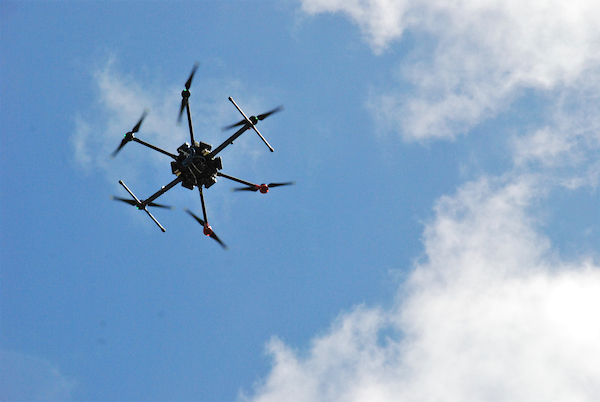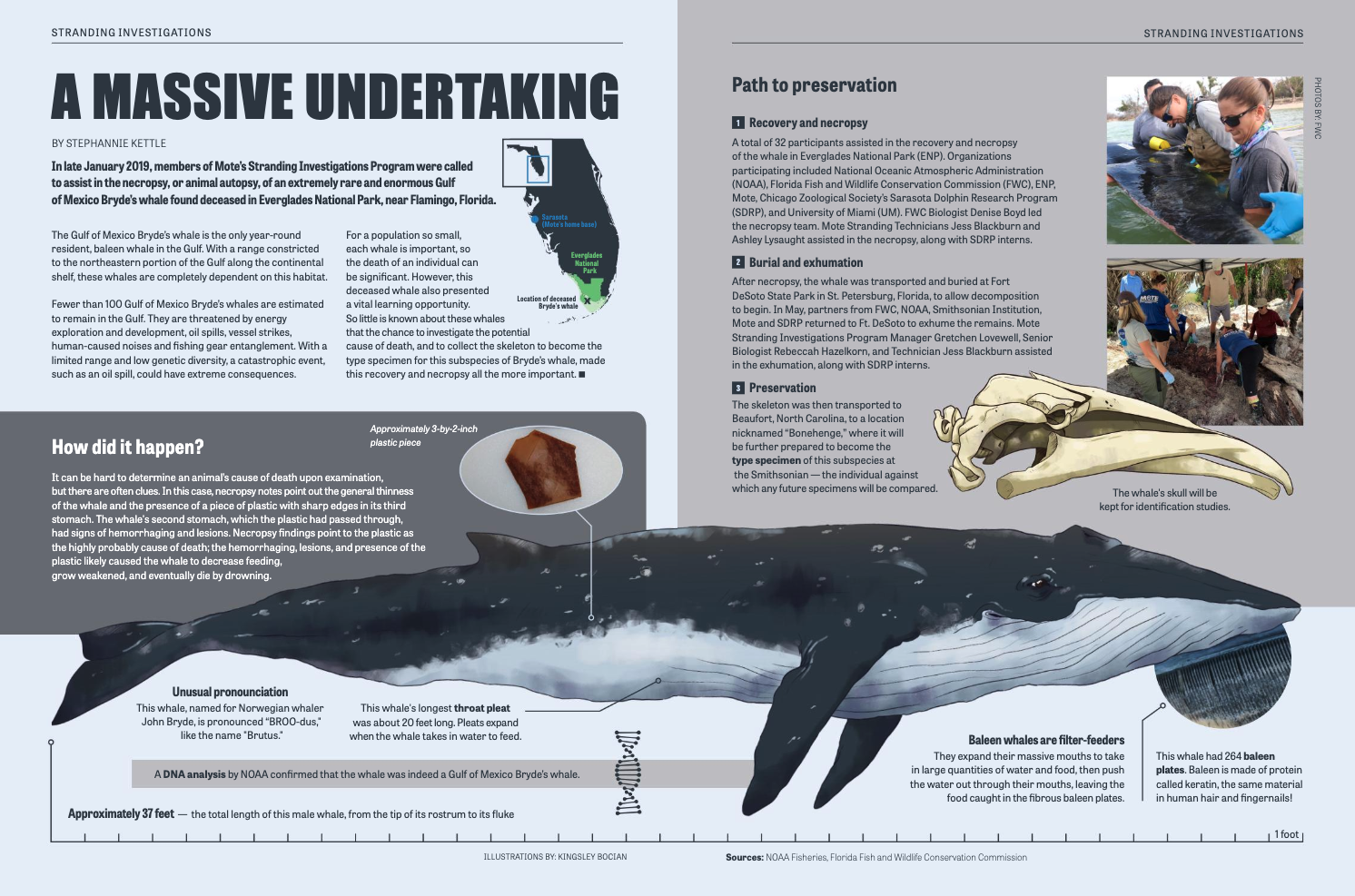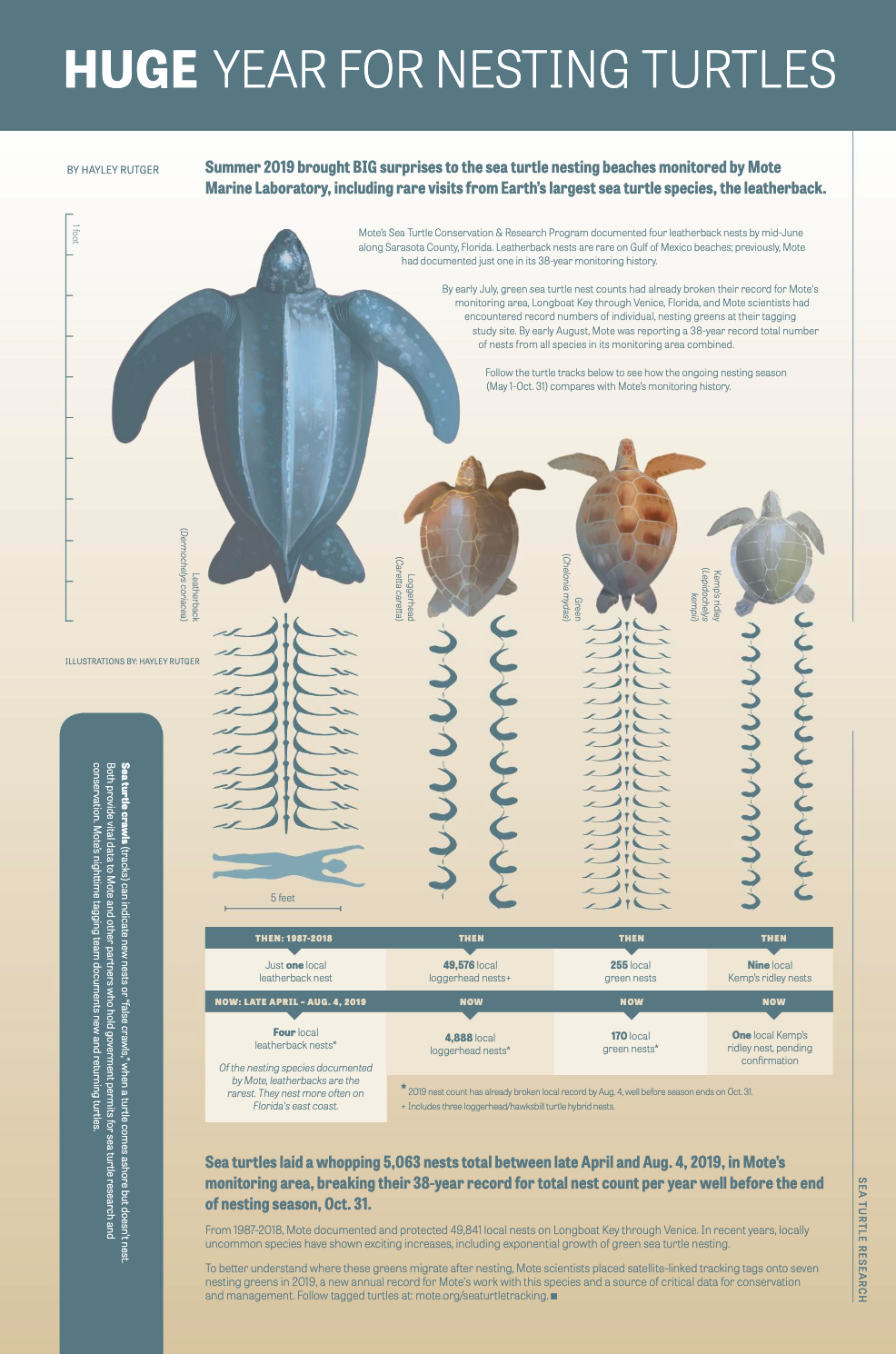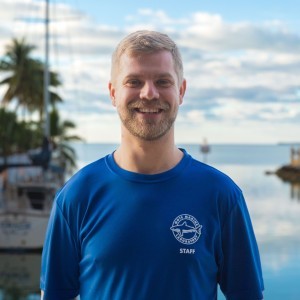Impacts: World-class research at Mote
Dedicating our lives to wildlife
Sharks, marine mammals and sea turtles are vital to ecosystems and cultures worldwide. Their future is linked to our own, and their protection must be guided by the best-available science. This year Mote reported long-term milestones and improved methods for science to support conservation.
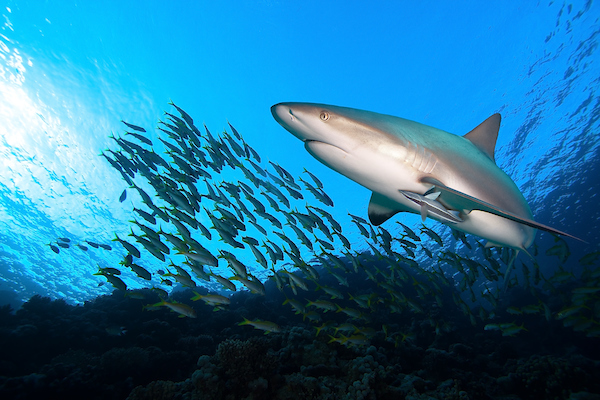
-
This year, Mote’s shark scientists co-authored a study in the prestigious journal Nature revealing that major high-seas fishing activities overlap significantly with important shark hotspots worldwide. The study spotlighted accelerating shark population declines and disappearance of their hotspots, along with opportunities for more sustainable management of fisheries and shark populations internationally.
Study partners point out that North Atlantic blue sharks and shortfin mako—the fastest shark in the sea—have on average 76% and 62% of their space use, respectively, occupied by longline fishing vessels each month, and even internationally protected species such as great white and porbeagle sharks are at risk of bycatch in such fisheries.
The study included 150 scientists from 26 countries who combined their knowledge and data from nearly 2,000 satellite-tagged sharks. Co-authors from Mote’s Center for Shark Research have tracked white, bull, hammerhead, whale and multiple other shark species with satellite tags over decades of conservation-focused science, some in collaboration with research partner OCEARCH.
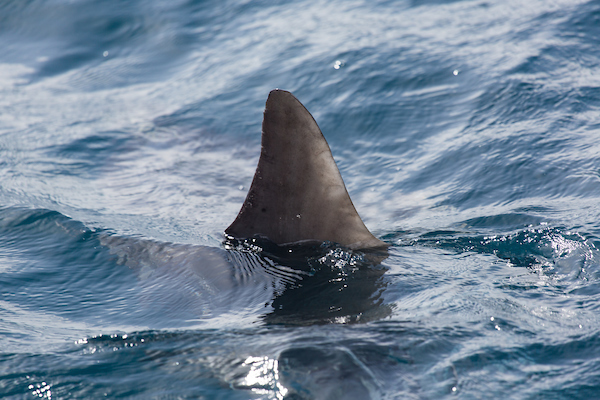
-
In 2019 Mote helped establish the Pelagic Ecosystem Research Consortium (PERC) focused on highly migratory sharks, tunas and swordfish. PERC—led by the University of Maine and supported by NOAA Sea Grant—works to improve stock assessment, management and sustainability of these economically and ecologically important fishes in the Atlantic Ocean and Gulf of Mexico.
PERC partners are studying at least a dozen shark species and five tuna species to deepen knowledge of how their lives play out in the wild and to understand the structure of each population. The team is assessing which locations and habitat types support pelagic tunas, billfish and other bony fishes, and pelagic and coastal sharks at each life stage. For certain species, they’ll investigate bycatch—being caught unintentionally by fishing vessels targeting other species—to inform management strategies to reduce this challenge. Also, the team will investigate the stress of catch-and-release fishing for great hammerhead sharks and swordfish, and offshore oil platform impacts on yellowfin tuna. PERC launched with the support of a competitive, $1.6 million grant awarded through NOAA’s 2019 Sea Grant Highly Migratory Species Research Initiative.
Mote is leading the shark component of PERC’s objectives, with a $600,000 project in its first year supported by $400,000 of the Sea Grant support and a $200,000 match from Mote and its partner organization OCEARCH, which is providing $75,000 in ship time aboard its state-of-the-art shark research vessel.
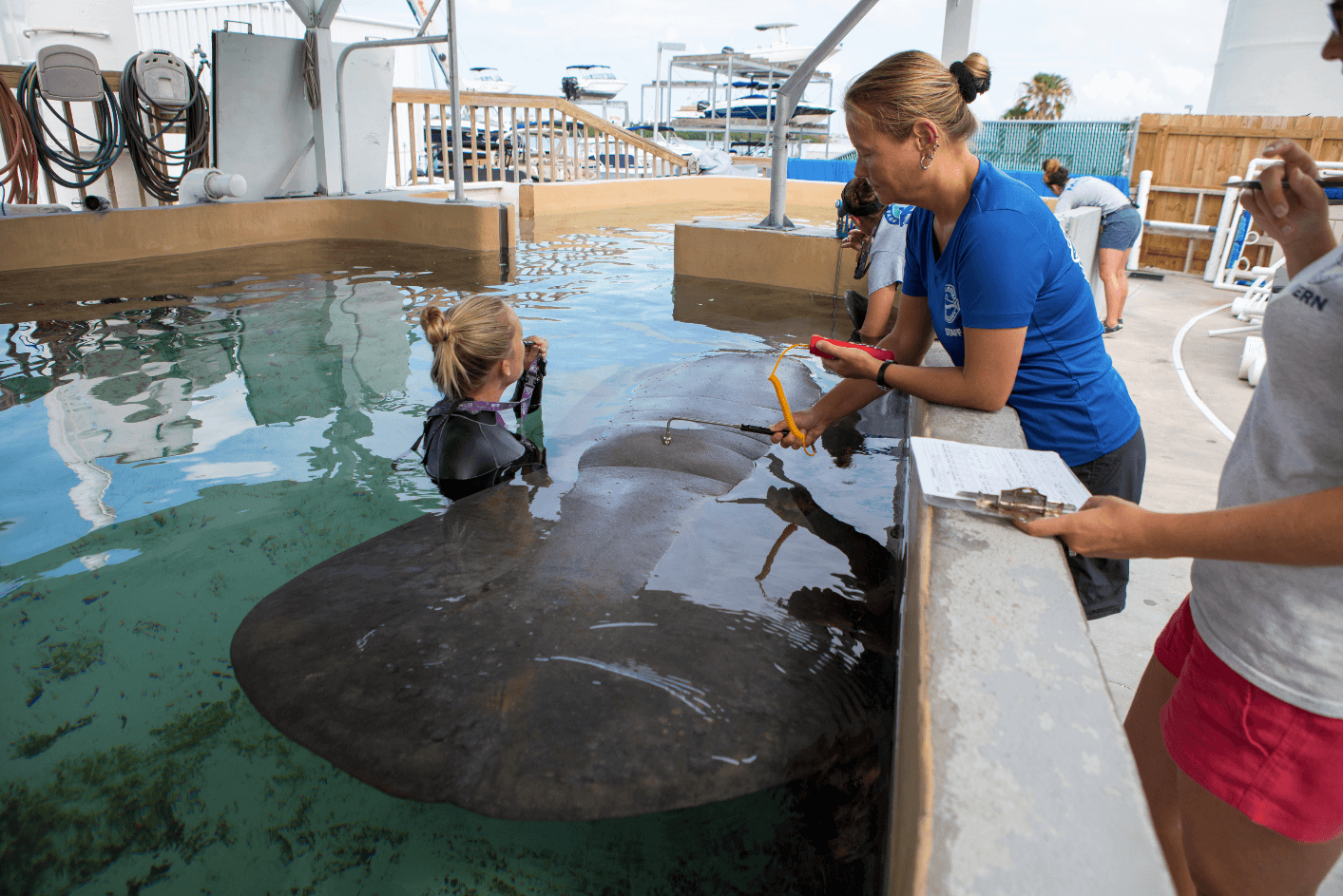
-
This year Mote scientists investigated the impact of cold air on manatee thermal biology, working with Mote’s resident manatees. In the wild, cold stress is one of the major threats to Florida manatees, and so far, it has been mainly associated with cold water. Knowledge of the impact of air temperature on manatee health will improve manatee rehabilitation and help with mitigating cold-related manatee mortality in winter.
In this study, initiated in 2016, scientists in Mote’s Manatee Research Program measure skin temperature in 25 spots on Mote’s resident manatees, Hugh and Buffett, under varying weather conditions. Hugh and Buffett are held in constant warm water (26-27 degrees Celsius / 79-80 degrees Fahrenheit) and are highly trained to participate voluntarily in research, husbandry (care) and medical examinations. The manatees’ training and the constant water temperature in their habitat at Mote allowed for this controlled study that would have been impossible in the ocean environment. Preliminary results were presented at the World Marine Mammal Conference WMMC’19 in December 2019 in Barcelona, Spain, and at the Manatee Research Symposia hosted by the University of Florida (UF), U.S. Geological Survey (USGS) and FWC in November 2018 and August 2019 in Gainesville.
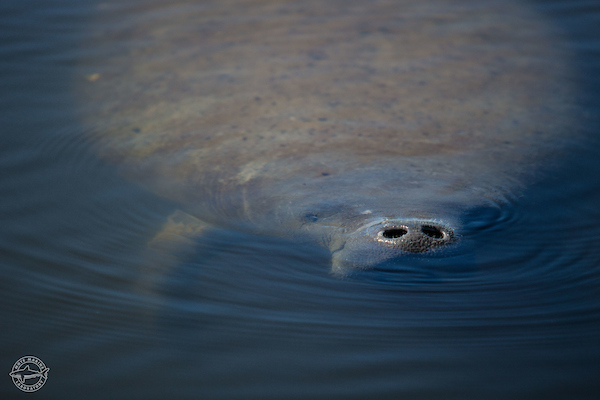
-
Mote research is also revealing that manatees’ nostril temperature, assessed by thermal imaging (infrared thermography), may serve as a non-invasive, contact-free method to measure manatees’ body temperature. A reliable, non-invasive method to measure body temperature in a manatee is currently lacking and direly needed in manatee diagnosis and health assessment.
For this study, Mote scientists have been using an infrared-thermography (video) camera to record the temperature in the nostrils of manatees as they breathe. Data have been collected from manatees in human care and in the wild, including manatees captured for health assessments in December 2018 in Crystal River and in May and November 2019 in Belize.
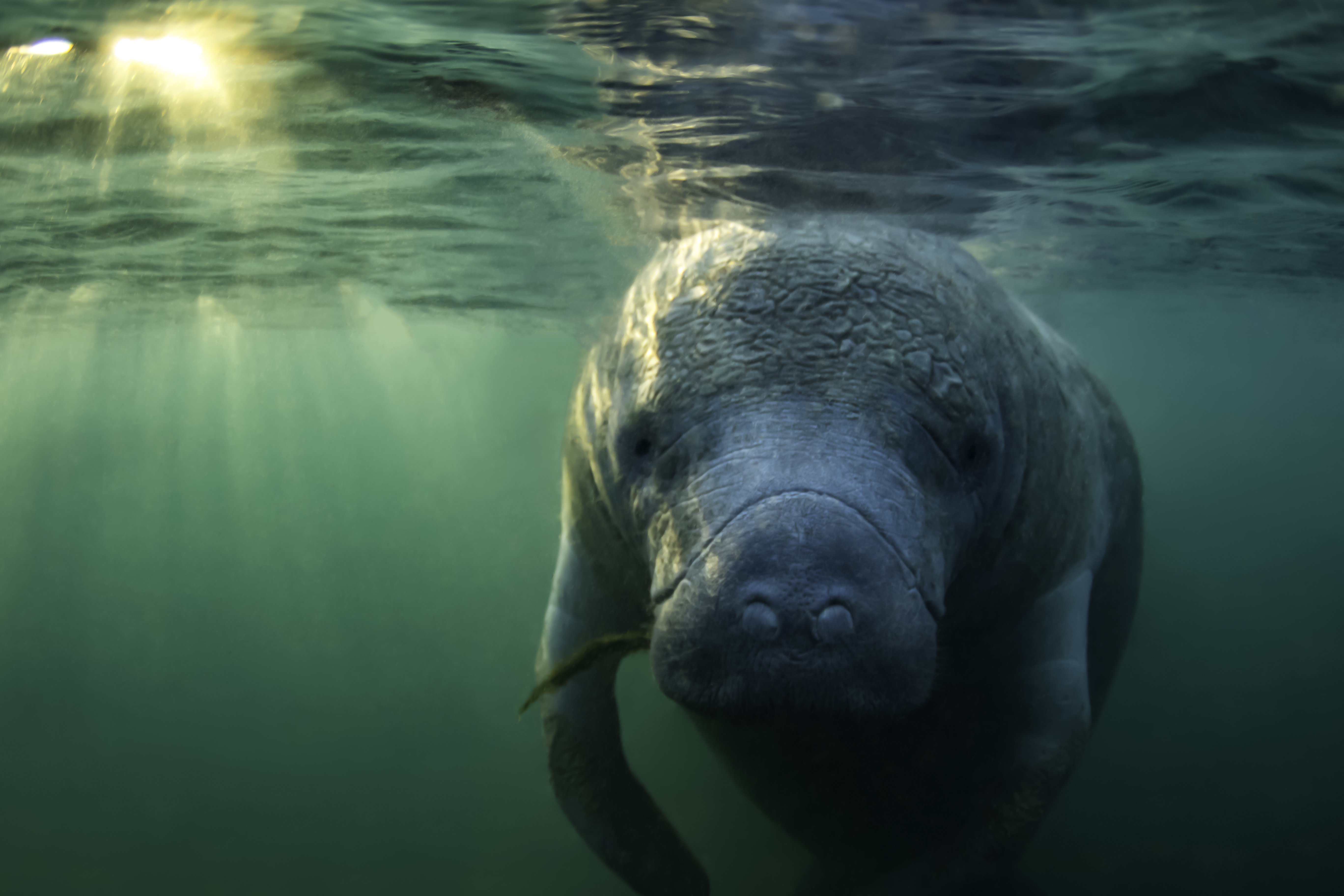
-
In October 2018, Mote began manatee photo-ID and temperature monitoring within a study investigating how manatees respond to temporary disruption of a warm-water source during the modernization of FPL’s Lauderdale Plant in Dania Beach, Florida. During the first monitoring season, over 400 individual manatees were photo-identified at warm-water sites in Broward and Miami-Dade counties, including individuals known to scientists as long as 39 years.
Of the manatees observed in the study so far, 49 individual manatees have been identified through preliminary searches of the statewide database, the Manatee Individual Photo-identification System (MIPS), with sightings ranging from Brevard County south to the Little River in Miami.
-
Mote scientists also continued their long-term, manatee-photo-ID efforts in southwest Florida to inform conservation, with 255 surveys this fiscal year, identifying 355 individual manatees through ongoing photo analyses.
Of the manatees identified, 131 have been observed repeatedly and one that has been observed for 36 years. Mote’s photo-ID surveys involve taking pictures to identify individual manatees by their markings, including scars and mutilations from boat strikes. Photo-ID data are used to calculate survival estimates, life history and reproductive rates, site fidelity (tendency to return to a specific place), behavior, movement and travel patterns, and habitat selection.
Also in fiscal year 2019, Mote’s Manatee Research Program responded to nine separate manatee mating-herd events on Lido and Siesta Keys to collect data, educate the public and monitor/limit their interactions with the manatees. Mating herds occur when multiple males surround a female in estrus.
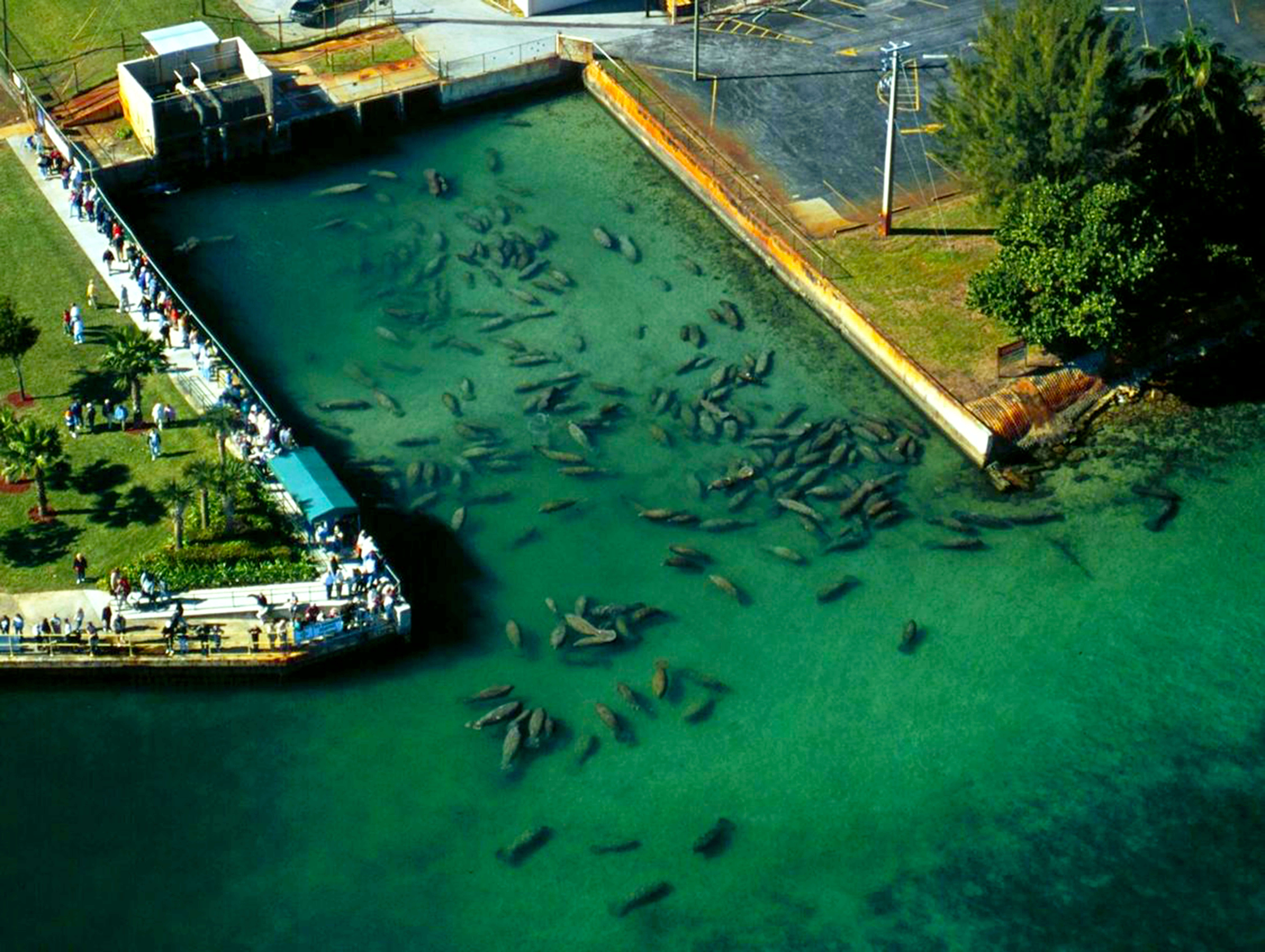
-
Mote scientists counted 178 manatees—a Sarasota County record high—on Sept. 10, 2019 via aerial (airplane) surveys in the county, and they conducted their 42nd year of winter, aerial surveys of power plants in collaboration with Florida Power & Light Co. (FPL).
Two power-plant surveys conducted on two dates in January 2019 resulted in a total of 1,220 and 1,719 manatees counted. These surveys covered important warm-water sites along the east coast of Florida, from Titusville to West Palm Beach, and Fort Myers in southwest Florida.
In general, Mote’s long-term aerial survey data support manatee conservation from county-level Manatee Protection Plans to state and federal protection and management measures.
-
A 2019 Mote-FPL pilot study found that unmanned aerial vehicles (UAVs, drones) with video cameras may enhance manatee surveys for numbers, distribution and possibly identification of some individuals, without disturbing the manatees.
Four UAV surveys were conducted at two study sites, recording high-quality video with the goal of obtaining counts and documenting the distribution of manatees, in comparison with concurrent conventional aerial surveys employing high-winged aircraft.
-
In late January 2019, Mote assisted in the necropsy (animal autopsy) of a rare, critically endangered, enormous, Gulf of Mexico Bryde’s whale found deceased in Everglades National Park. A piece of plastic in the whale’s third stomach was deemed the probable cause of death.
Click on thumbnail to view infographic.
A total of 32 participants assisted in the recovery and necropsy of the whale in Everglades National Park (ENP). Organizations participating included NOAA, FWC, ENP, Mote, Sarasota Dolphin Research Program (SDRP, a Chicago Zoological Society program in collaboration with Mote), and University of Miami).
After necropsy, the whale was transported and buried at Fort DeSoto State Park in St. Petersburg, Florida, to allow decomposition to begin. In May, partners from FWC, NOAA, Smithsonian Institution, Mote and SDRP returned to Ft. DeSoto to exhume the remains.
The skeleton was then transported to Beaufort, North Carolina, to a location nicknamed “Bonehenge,” so it could be further prepared to become the type specimen of this subspecies at the Smithsonian—the individual against which any future specimens will be compared.
-
In 2019, Mote documented a 38-year-record sea turtle nest count on Longboat Key through Venice, Florida—5,112 nests, surpassing the previous record by 523. A locally rare leatherback—Earth’s largest sea turtle species—laid four nests but her eggs were undeveloped, possibly because she couldn’t find a mate. Mote scientists tagged her for identification and sampled her skin for genetics to compare with future nests if she returns.
Click on thumbnail to view infographic.
Mote’s Sea Turtle Conservation & Research Program (STCRP) scientists and volunteers monitor this 35-mile stretch of southwest Florida beaches every day of sea turtle nesting season (May 1-Oct. 31) and the two weeks before. By press time in early October, they had documented 5,112 total nests (compared with the past record, 4,589 in 2016). This year’s total included 4,925 loggerhead turtle nests, 182 green turtle nests (a local record for the species) and five other nests.
-
Mote scientists tagged seven female green sea turtles—more than in any prior year—with satellite transmitters to track their migrations after they left the nesting beaches. Track these turtles and others: mote.org/seaturtletracking.
One of this year’s satellite-tagged green turtles was named “Cecil” by Carol Bishop, the winner of Mote’s sea turtle naming contest. Bishop chose the name “Cecil” in honor of her mother, who passed away last year. Sea turtles also won, as the contest raised $1,200 in donations for Mote’s STCRP in just 10 days. Interestingly, Cecil nested twice on Florida’s Gulf Coast and after she was tagged, she traveled around to the state’s east coast presumably to lay more nests before traveling to her foraging grounds in the Marquesas Keys.
Photos by: frantisek hojdysz/Adobe Stock, Jamen Percy/Shutterstock, Conor Goulding, Eric/Adobe Stock, USGS, Hayley Rutger, Henri Swanson
